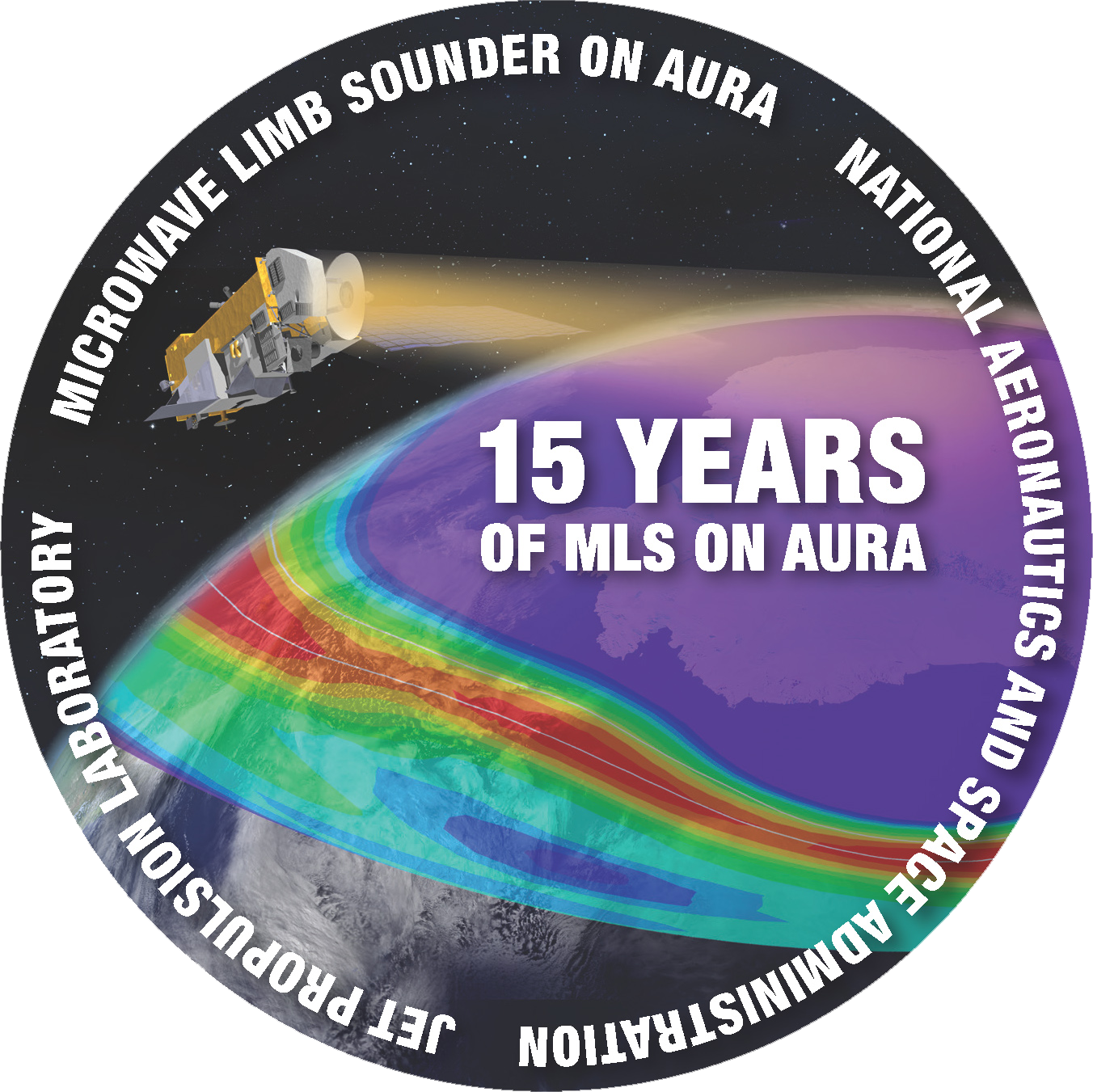Aura Microwave Limb Sounder
Aura Mission Overview
Aura is in a near-polar 705 km altitude orbit. As Earth rotates underneath it, the Aura orbit stays fixed relative to the sun; to give daily global coverage with ~15 orbits per day. Aura is part of NASA's A-train group of Earth observing satellites. These satellites fly in formation with the different satellites making measurements within a short time of each other.Aura MLS Overview

MLS makes measurements of atmospheric composition, temperature, humidity and cloud ice that are needed to (1) track stability of the stratospheric ozone layer, (2) help improve predictions of climate change and variability, and (3) help improve understanding of global air quality. MLS observes thermal microwave emission from Earth's 'limb' (the edge of the atmosphere) viewing forward along the Aura spacecraft flight direction, scanning its view from the ground to ~90 km every ~25 seconds.
Science Objectives
The MLS measurements are made globally day and night. A feature of the MLS technique is that its measurements can be obtained in the presence of ice clouds and aerosol that prevent measurements by shorter-wavelength infrared, visible and ultraviolet techniques. MLS has scientific objectives in three (3) areas:1. Stratospheric Ozone Layer Stability
MLS measures the vertical profiles of ozone and many chemical species that affect it. It is providing the first global measurements of stratospheric and mesospheric OH and HO2, the key chemicals in hydrogen chemistry that destroys ozone.MLS measures chlorine monoxide (ClO, the primary form of chlorine that destroys ozone), hydrogen chloride (HCl, the primary relatively inactive 'reservoir' form of stratospheric chlorine, and another more minor chlorine species (HOCl).
It measures bromine monoxide (BrO), which is both the primary form of bromine that destroys ozone and the primary form of bromine in the stratosphere. In addition to the chlorine and bromine species, MLS measures water vapor (H2O), nitric acid (HNO3) and temperature that - among other things - provide key information on polar processes that can lead to large ozone losses in the Antarctic and Arctic.
Its measurements of the N2O and CO 'tracers', and geopotential height, provide information on atmospheric transport that helps separate the effects of atmospheric motion from chemical destruction.
The volcanic SO2 measurements help diagnose the effects of volcanoes on the ozone layer, and the lower altitude CO, CH3CN and HCN measurements can provide information on pollutants from below that may affect ozone chemistry. The cloud ice measurements, along with H2O at lower altitudes, provide information on the processes by which air from below enters the stratosphere.
2. Climate Change
The primary MLS measurements for helping understand climate change are water vapor and cloud ice in the upper troposphere. Feedbacks associated with water vapor in the upper troposphere, depending upon the process, can either amplify or attenuate the effects of other greenhouse gases. Measurements of upper tropospheric cloud ice provide new information on these processes, especially deep convection.O3 is also an important greenhouse gas, and O3 in the upper troposphere - where MLS is providing new measurements - has the largest effect on climate.
Temperature and geopotential height are also indicators of climate change, and SO2 injected into the stratosphere by volcanoes leads to the formation of aerosols that affect climate.
3. Air Quality
MLS observations of upper tropospheric ozone and carbon monoxide provide important new information for global air quality research.Ozone in the troposphere is a pollutant of major global concern, and CO is an excellent tracer of pollution transport.
Deep convection and other processes can deposit polluted boundary layer air into the upper troposphere where faster winds transport it over long distances. As a result, the upper troposphere, where MLS makes measurements plays a significant role in the intercontinental transport of polluted air.
The upper troposphere is especially significant for the transport of Asian pollution to America.
